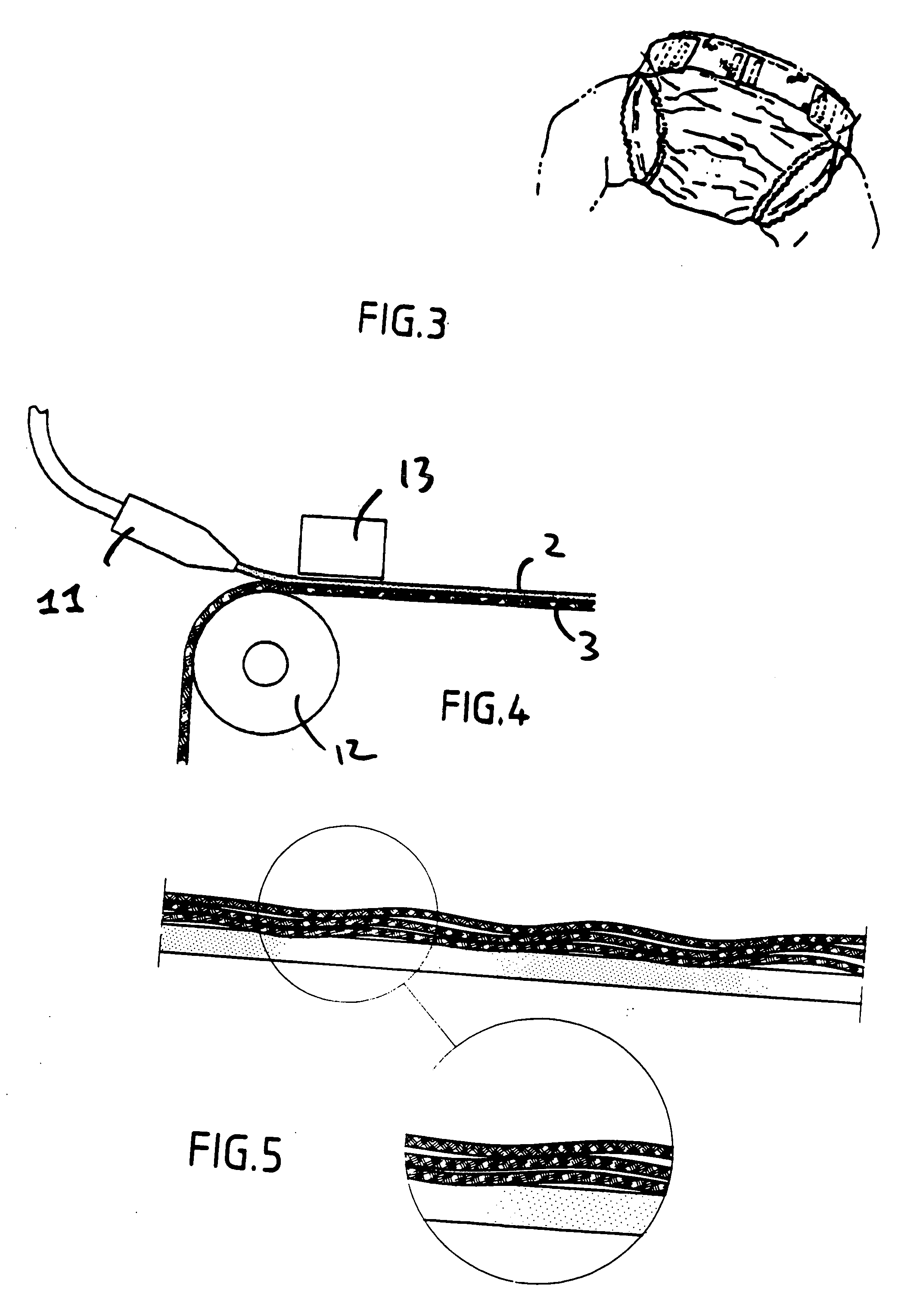Composite formed from a film and a knitted or a non-woven fabric for hook-and-loop closures, in particular for disposable nappies
a technology of knitted or non-woven fabrics and films, which is applied in the direction of knitting, ornamental textile articles, weaving, etc., can solve the problems of limited rate of production, ineffective hooking into the hook, and limited rate of layered assembly, so as to achieve high production rate
- Summary
- Abstract
- Description
- Claims
- Application Information
AI Technical Summary
Benefits of technology
Problems solved by technology
Method used
Image
Examples
Embodiment Construction
[0028]FIG. 1 shows a layered assembly 1 formed from a film 2 and from a knitted fabric 3. The knitted fabric 3 is made from a base 4 formed from an interlocking arrangement of warp threads 5 and columns of stitches 6. This interlocking arrangement forms a regular mesh with polygonal, four-sided stitches. Loops 8, also forming a mesh, are knitted into the interlocking arrangement of warp threads and columns of stitches. In this case the size of the loops is such that when they are laid flat against the base of the knitted fabric they are circumscribed by a stitch of the base. In fact it is not necessary to provide large loops, i.e. loops which are larger in size than the polygonal, four-sided stitch. However, if desired, large loops can, of course, be produced.
[0029] As shown in FIG. 2 (the loops are not shown therein for simplification) the threads 5, 6 of the interlocking arrangement of columns of stitches and weft threads are partially coated in the material of the film 2. One we...
PUM
| Property | Measurement | Unit |
|---|---|---|
| angle | aaaaa | aaaaa |
| angle | aaaaa | aaaaa |
| weight | aaaaa | aaaaa |
Abstract
Description
Claims
Application Information
 Login to View More
Login to View More - R&D
- Intellectual Property
- Life Sciences
- Materials
- Tech Scout
- Unparalleled Data Quality
- Higher Quality Content
- 60% Fewer Hallucinations
Browse by: Latest US Patents, China's latest patents, Technical Efficacy Thesaurus, Application Domain, Technology Topic, Popular Technical Reports.
© 2025 PatSnap. All rights reserved.Legal|Privacy policy|Modern Slavery Act Transparency Statement|Sitemap|About US| Contact US: help@patsnap.com



